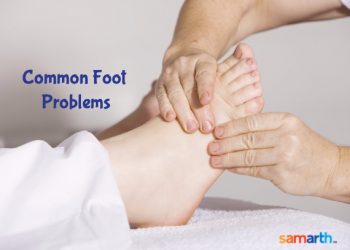Using ice packs and hot bags is one of the most common, as well as inexpensive and yet effective measures for relief from joint pains. However, not many people are sure which is best for their kind of pain or what to use when, or whether they can use both, etc. Hence, in this article, we are trying to decode these doubts about pain relief using these two methods.
When to use?
Heat helps to improve blood circulation, thus relaxing the muscles, and providing soothing to the joints that are aching. Heat also provides nutrients to these muscles and loosens up your body. However, cold is most useful for acute pains as it restricts the blood vessels and slowing down the circulation. Cold also helps in reducing swelling, and numbs the nerve endings and thus the pain. Cold therapy is said to help people with rheumatoid arthritis, gout, osteoarthritis, spondylitis etc.

Join Now >
Hence, especially for people who suffer from normal arthritis or osteoarthritis, these two therapies can actually help a lot. So, depending on the situation, like whether you just want to soothe aching muscles or joints, or also reduce accompanying swelling, you may choose either or both of these options. Many people experiment with both to see which provides the best relief. Generally, it is suggested that heat therapy works best in the morning and the cold therapy in the evening. Some also keep alternating for better relief from all pain conditions.
Heat therapy options
Here are a few ways in which you can try out heat treatment options for your pain relief.
1. A warm water shower can help ease the stiffness in the muscles, especially if you have morning stiffness.
2. If you have the luxury of a bathtub, please feel free to soak in it for a while for relief from aching joints and muscles.
3. Use heating pads or hot water bottles or even portable electric ones that can be easily purchased from our web store or any medical shops, or online portals. These should be used as per instructions, for about 20 minutes at a time, with a cloth buffer in between to protect your skin from overheating.
4. You could also reusable moist/gel pads that are available that can be used for both heat and cold treatments. These can be frozen or heated in a microwave/dipped in boiling water for heat therapy.
5. If it’s your hand fingers of feet that are troubling you, you could just choose to soak them in hot water for a while.
6. You could even use steamed towels to wrap the affected places.
Warning: People who have other existing medical conditions like diabetes, dermatitis, vascular diseases, deep vein thrombosis or multiple sclerosis (MS), heart disease, hypertension, etc. are advised not to use this, unless prescribed or approved by a doctor.
Cold therapy options
1. The simplest way to use cold therapy is to put a few pieces of ice in a cotton cloth and wrap it to make an ice cap and apply to the affected area. Keep doing this for 20 minute periods, for good relief.
2. The cold gel pack mentioned in the heat therapy can be used refrigerated as is, for cold therapy. Just remove it from the fridge and use it on the affected places. If you find the cold too much initially, you may wrap the pack in a towel.
3. You could choose to soak the joints in ice cold water if you need relief from swelling and pain.
People suffering from sensory disorders, diabetes, or have poor circulation should not use such treatment unless otherwise advised by a doctor. Also, cold therapy should not be used on stiff joints and muscles as that can worsen the condition.
Watch out
In either of the cases, if you do not get relief, or conditions worsen, please stop applying the heat or the cold therapy. Especially if swelling increases, it is best to consult a doctor immediately. Cold therapy, if not used properly, or used excessively can cause nerve damage. Hence, it is best to follow instructions or not to use it for more than 20 minutes at a time strictly. Also, if you feel any continued numbness after use, consult a doctor.











